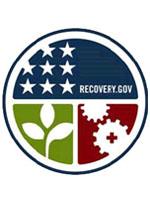
Recovering from the Recovery Act - Part 1

In 2009, the Recovery Act provided a one-time boost in spending to state and local governments of more than $275 billion which was distributed via 65 different new or existing federal programs. This one-time increase in state-local spending was nearly 60 percent over the previous year!
The fear that these funds would be wasted -- or even worse, stolen – resulted in a new, centralized system of financial and performance reporting, with frequent reporting requirements. These new reporting requirements, as well as the rapid implementation timeframe required by the Recovery Act, created an enormous implementation challenge for all the participants in our federal-state-local-nonprofit intergovernmental system.
States and localities historically have reported their grant spending to the various federal agencies providing the funding, but this new, centralized reporting and transparency requirement, with a high degree of detail and accuracy, was unprecedented.
Two academics from Virginia Tech, Anne Khademian and Sang Choi, examined what happened in three localities one state in their report: Virginia’s Implementation of the American Recovery and Reinvestment Act: Forging a New Intergovernmental Partnership. They studied the implementation of the grants management and reporting provisions of the Act “on the ground” in Alexandria, Richmond, and Blacksburg.
Specifically, they examined:
- the impact of the speed at which the localities implemented their funding;
- how they addressed increased information demands and increased frequency of reporting;
- how they used risk management as a strategic lens in their decision-making; and
- how they increased their collaborative efforts with both state and federal partners.
Virginia was awarded more than $6.2 billion via nearly 6,000 contracts and grants. These are reported on both the federal Recovery.gov website as well as the state’s own Recovery spending website.
But how the data got there is a story!
Each of the three localities took a different path.
- Alexandria centralized the receipt, use, and reporting of the Recovery Act funds it received, creating a separate office to manage the monies. The approach it used was similar to the centralized “incident command system” often used to manage in natural disasters. Like the federal and state governments, it created a separate website for transparency, as well.
- Richmond retained its traditional decentralized approach to grants management via its various city agencies, but it developed an IT-driven strategy to collect and report the required federal data. This approach allowed a fully automated reporting structure based on standardized reporting elements without centralizing the decision-making. It also created a “stimulus tracker” website.
- Blacksburg integrated its Recovery Act monies directly into existing grants management processes, serving largely as a pass-through for these monies to its traditional nonprofit partners such as the local affordable housing nonprofit. Here’s an example of how its funding is reported in the federal-level Recovery Act data base.
The authors also offer a series of recommendations to improve both local and federal grants processes in the future. For example, they encourage local leaders to continue the use of “high coordination, standardization, and enhanced accountability” processes as “the new benchmark for administer grants.” And they recommend federal agency continue to “promote risk management” as a framework for all their grants to local governments.
The authors conclude that the Recovery Act worked, and it worked on several levels. Its speed, and high level attention resulted in improvements in grants management at all levels of government. Also, the approach used to implement the Recovery Act may also serve as a new benchmark for rapid information sharing and that this may become the norm for future reporting. They conclude that the Act may have changed intergovernmental relations for the better by making data available centrally because it “has moved the partnership from a more siloed, top-down set of relationships to a more interactive process driven by real-time data.”
In fact, Congress seems pleased enough with the data collection approaches used in the Recovery Act to be considering expanding the same type of reporting requirements to all federal spending. So, states and localities may think they’ll be recovering shortly from the Recovery Act reporting requirements, only to have them applied to all their federal grants, loans, and contracts!
* * * * * * *
Subsequent posts can be accessed at:
Part 2: Recovering from the Recovery Act: The Story from the Top: The Recovery Implementation Office
Part 5: Recovering from the Recovery Act: How States Reported on Use of Funds



